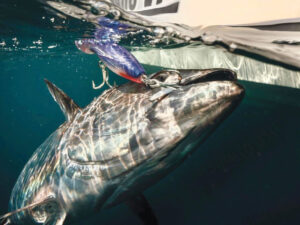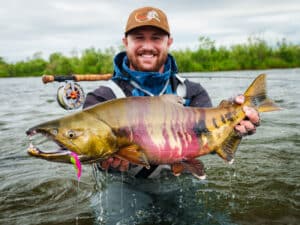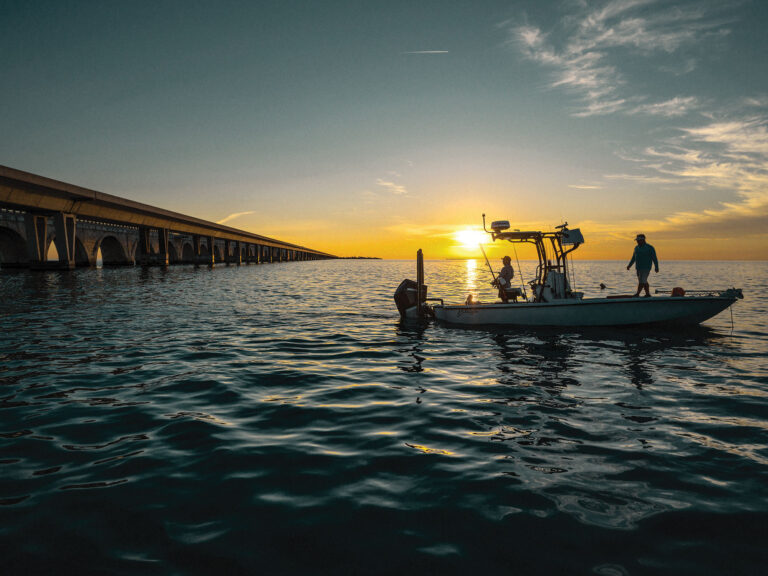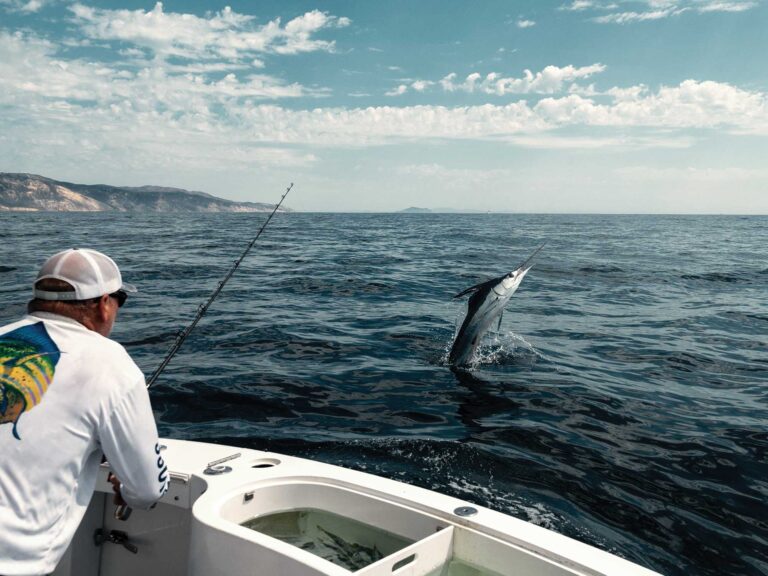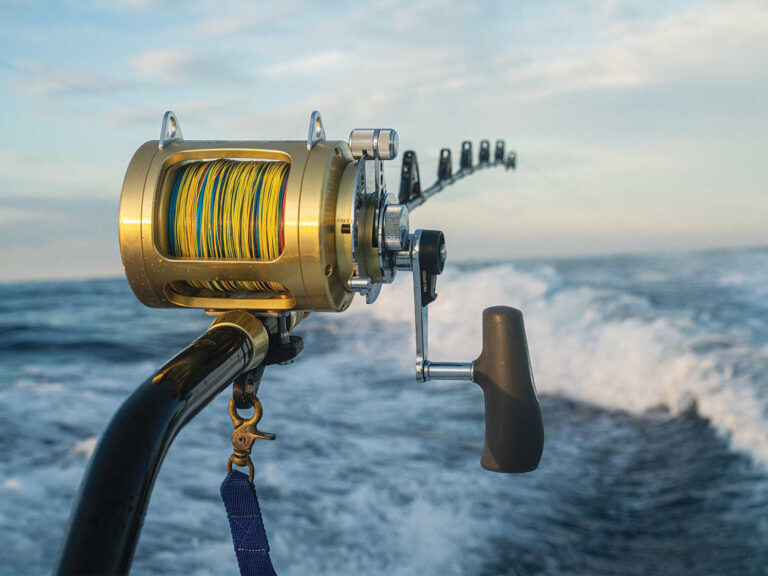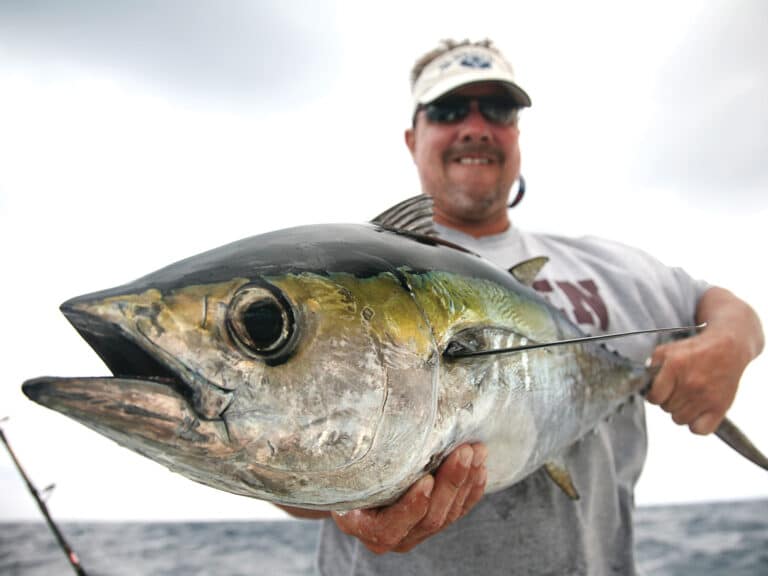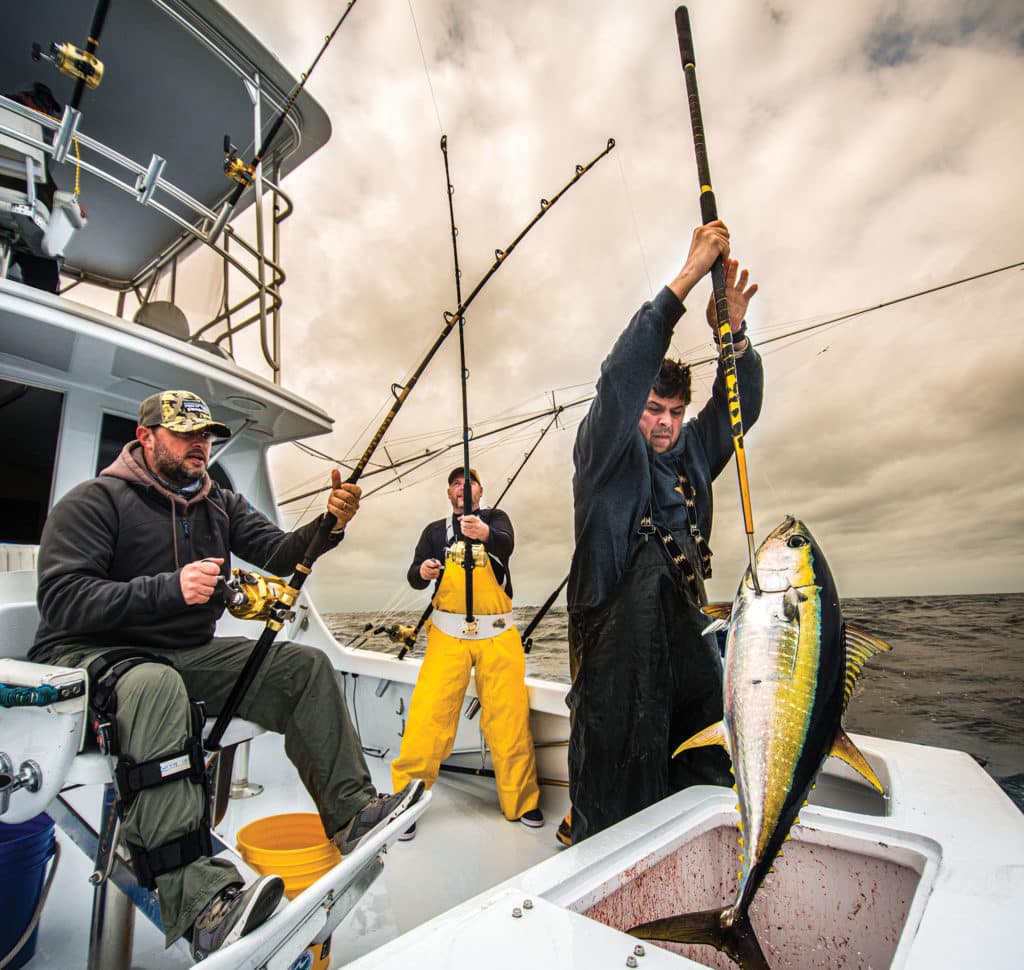
A 40-pound yellowfin tuna launched itself out of the water and dive-bombed my topwater popper, prompting an epic toe-to-toe light-tackle fight. Once the battle was over and the neon-gold tuna finally came over the gunwale, I couldn’t help but admire the pelagic wanderer and ponder where it might have come from.
Unsolved Mysteries “It’s a big unknown,” admits Dr. Jeff Kneebone, a research scientist at the New England Aquarium, and part of a team led by Dr. Walt Golet of the University of Maine tracking yellowfin tuna with satellite tags attached to fish caught on recreational fishing gear—and released—in the northwest Atlantic. Yet data transmitted by the tags has provided some answers.
For starters, tags revealed some of the released fish hugged the continental shelf, some headed offshore, and a couple bounced around between Atlantis and Veatch canyons, making a loop out to 150 miles offshore. Data also showed yellowfins generally spend nights near the surface, then dive as deep as 3,000 feet during the day; they swim up to 35 miles per hour and prefer water around 70 degrees, but withstand temperatures as low as 44 degrees for brief periods.

Clues and Deductions For anecdotal evidence, I headed to Oregon Inlet, North Carolina, to fish on Tuna Fever with Capt. Billy Maxwell, a 30-year veteran of the region’s tuna fishery. He explained that a spring migration once brought schools of yellowfins from South Carolina to Hatteras, then around the corner to the Point off Oregon Inlet. But today the fish seem to just magically appear off Oregon Inlet. “I think they come from the east,” Maxwell says, backing up his theory with reports from commercial longliners.
Read Next: Yellowfin Tuna Recipe
It was early April when Maxwell and I went trolling for tuna, pulling Sea Witches along the edge of the Gulf Stream, which was laden with floating grass. We caught a number of 20- to 30-pounders, with most of the action concentrated around the 100-fathom drop. To find the fish, Maxwell looked for a temperature change overlying structure. The main stem of the Gulf Stream is a good place to start, but the fish could hang on the edge of an eddy spinning up the coast.
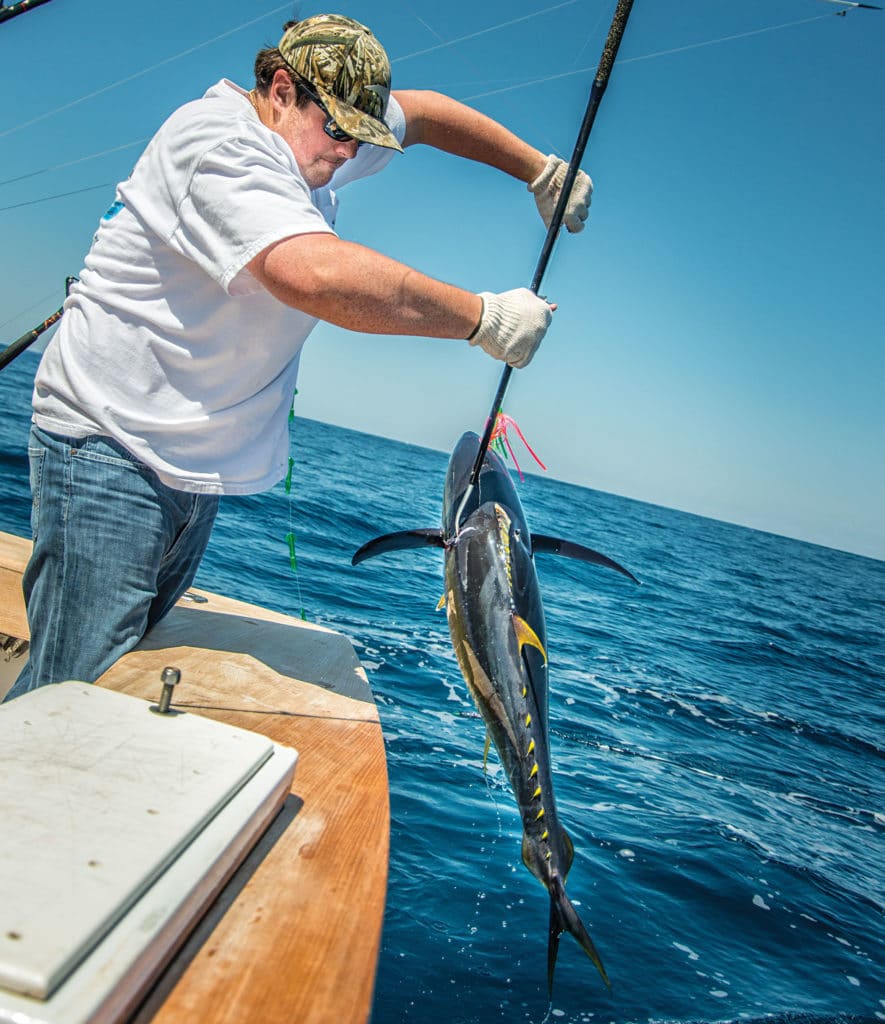
The Outer Banks veteran starts the season trolling skirted ballyhoo, but if the tuna are joined by pods of pilot whales, he adds a spreader bar to the center of the spread. Maxwell admits, however, that he hasn’t seen the whales in a few years. Once the water temperature reaches 80 degrees, the fish key on flying fish, so he switches to kite-fishing or rubber squid dangling from a greenstick, a tall boom that keeps the artificial baits skipping on the surface.
Read Next: Tactics for Mid-Atlantic Yellowfin Tuna on the Surface
Maxwell expects the abundance of sargassum will require dropping baits from the sky to stay out of the rough. He says the thick mats of grass could also attract huge schools of dolphin and, in turn, blue marlin. “When there are lots of dolphin, we see plenty of marlin and fewer tuna,” Maxwell explains, citing that dolphin and marlin fishing were slow in 2018, and they had a great fall tuna bite.
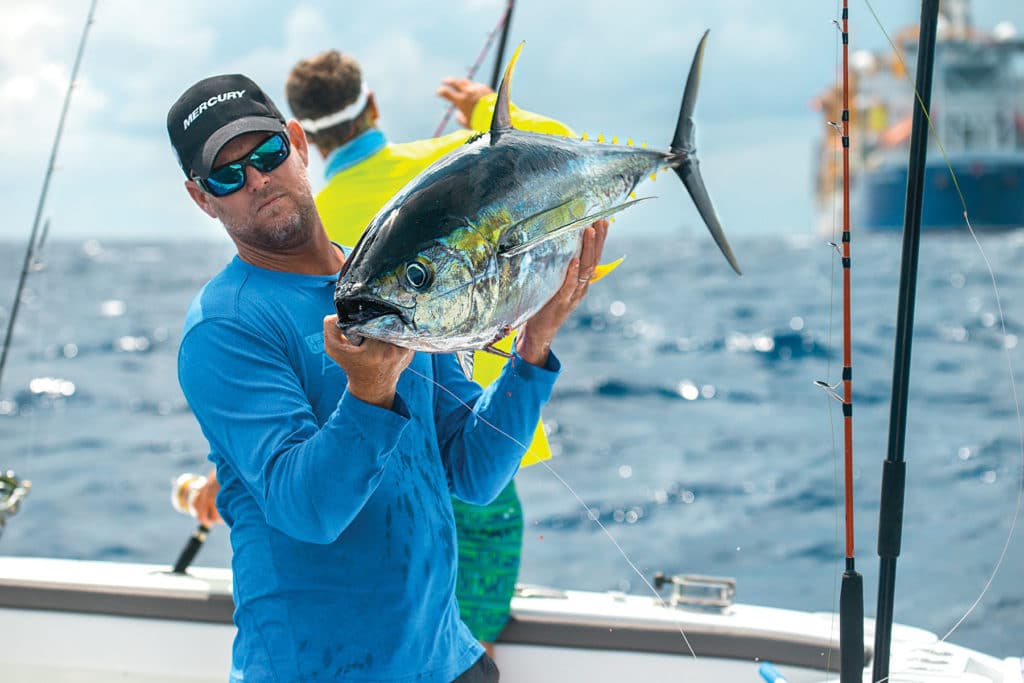
Bold Predictions Based on his experience, Maxwell predicts that a larger class of fish would arrive in early summer, and the fall tuna run would be in full swing by mid-October. That’s when the fleet switches back to trolling skirted ballyhoo and fishes 10 rods to entice yellowfins with a larger spread. He then looks for the fish to travel south, riding the eddies of warm water spinning down the edge of the continental shelf.
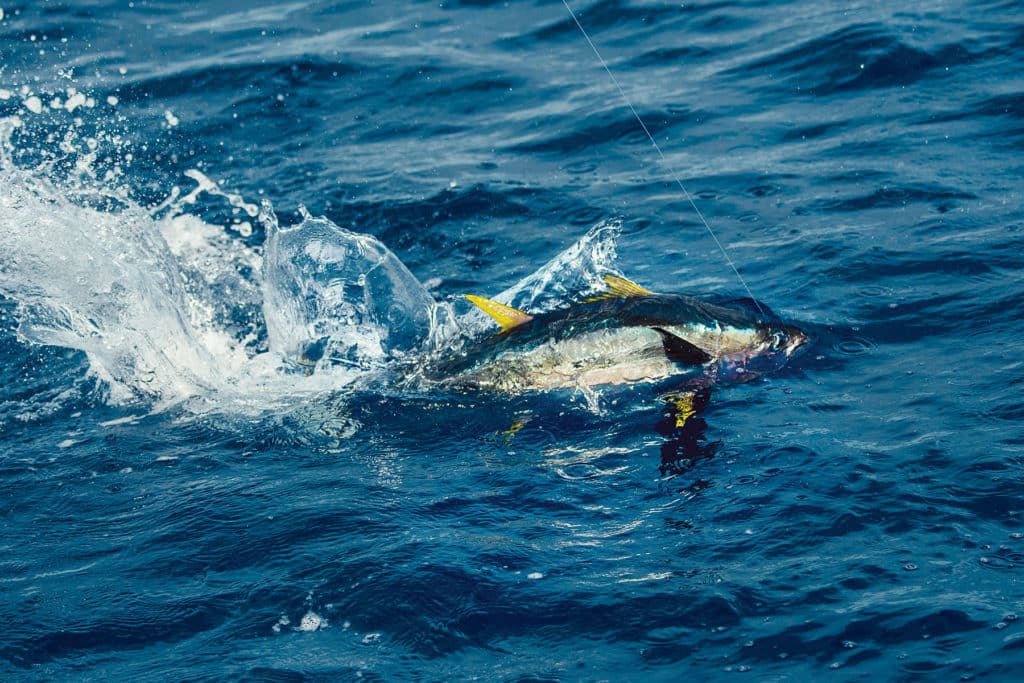
Farther North Capt. Mark DeCabia out of Shinnecock, New York, spends 250 days a year chasing yellowfins from Hydrographers Canyon to Wilmington. He has also noticed a major shift in their behavior. “Fifteen years ago, we’d see yellowfins show up in June, then thin out over the summer and return in the fall.” Like Maxwell in North Carolina, DeCabia theorizes the fish were moving on a north-to-south track in the spring, then east to west in the fall, but that seemed to change after 2015.
While insisting there still are plenty of yellowfin tuna around, DeCabia claims the migration today is less predictable, and the fish move through more quickly. “Last June, we saw great yellowfin fishing, but the action was short-lived. They were gone in a couple of weeks, and the fall fishery never materialized,” he says.
Read Next: Topwater Yellowfin Tuna Fishing Tactics in the Mid-Atlantic
DeCabia’s observations still point to an east-to-west migration pattern. “I’ll hear of boats to the east catching 90-pound tuna in the Atlantic, then I start catching them in the Hudson a few days later.” But he believes some anomaly of water conditions is keeping the big schools of tuna from moving inshore.
“This year, the North Carolina boats are having a great spring,” he points out. “And the squid fishery closed early as the boats filled their quotas,” so bait isn’t a problem. “On June 1, I’ll be out there looking for tuna,” asserts DeCabia, who relies on a network of captains and satellite water-temperature charts to predict the migration, and also studies satellite chlorophyll images in search of clear water. He often notices recreational anglers speeding past the schools of tuna. “People head for the 74-degree water while the bait is schooled up on the 66-degree edge.”
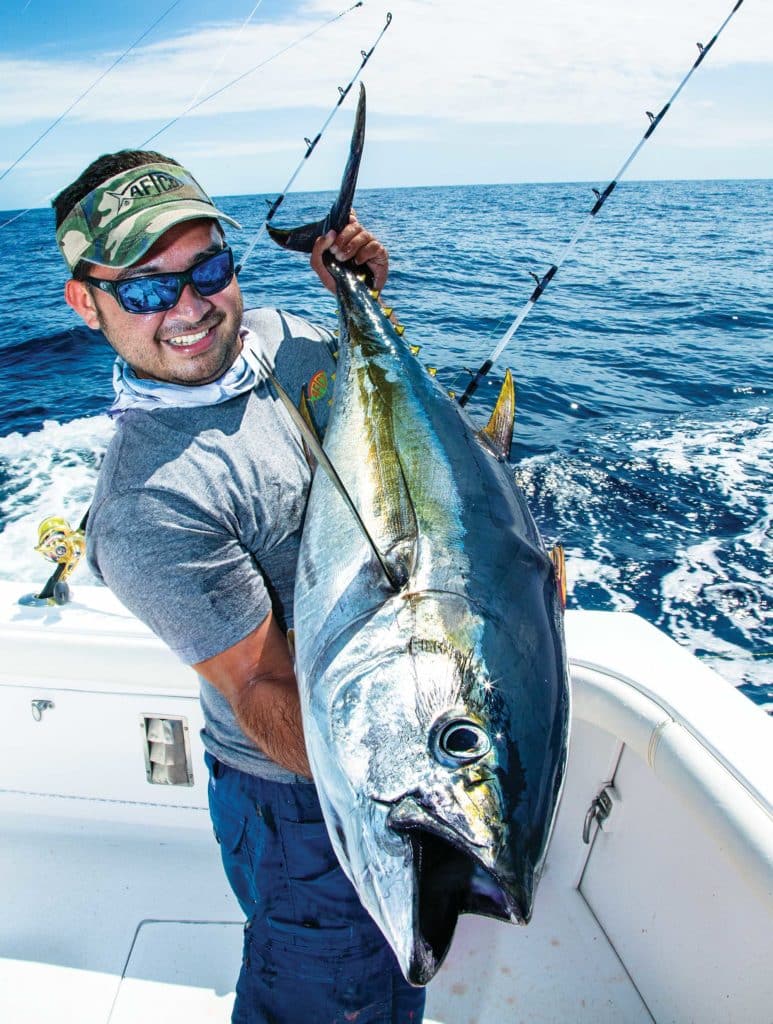
Seasonal Shift When he sees large numbers of bigeye tuna, DeCabia has learned to expect low numbers of yellowfins. Last year, warm water and sargassum resulted in the best marlin fishing in recent years, but tuna fishing remained slow in the fall.
DeCabia says early in the season, he frequently sees a combination of bluefins and yellowfins, and he trolls skirted ballyhoo. He expects the tuna action to slow through the summer months, but sometime in August, he’ll switch over to chunking at night.
“It’s the craziest thing,” he says. “One day we’ll catch fish on the troll, the next day we won’t get a bite. Then we’ll switch to night chunking, and suddenly the tuna action is on again.”
SWS Planner – Mid-Atlantic Yellowfin Tuna Run
What: Yellowfin tuna When: Mid-Atlantic to New England Where: Spring through fall Who: These experienced captains can predict where yellowfins will move along the coast:
Capt. Billy Maxwell 252-473-1097 tunafever.com
Capt. Mark DeCabia 516-428-7541
Tackle Box – Mid-Atlantic Yellowfin Tuna Run
What: Yellowfin tuna Rods: 6- to 61⁄2-foot, 50-pound-class stand-up Reels: 50-pound-class, two-speed conventional Line: 50-pound mono Leader: 25 feet of 150-pound mono attached to 10 feet of 100-pound fluorocarbon Lures: C&H Lures Sea Witch in purple-and-black, blue-and-white, and all white Hooks: 7/0 Mustad 7691DT, or equivalent
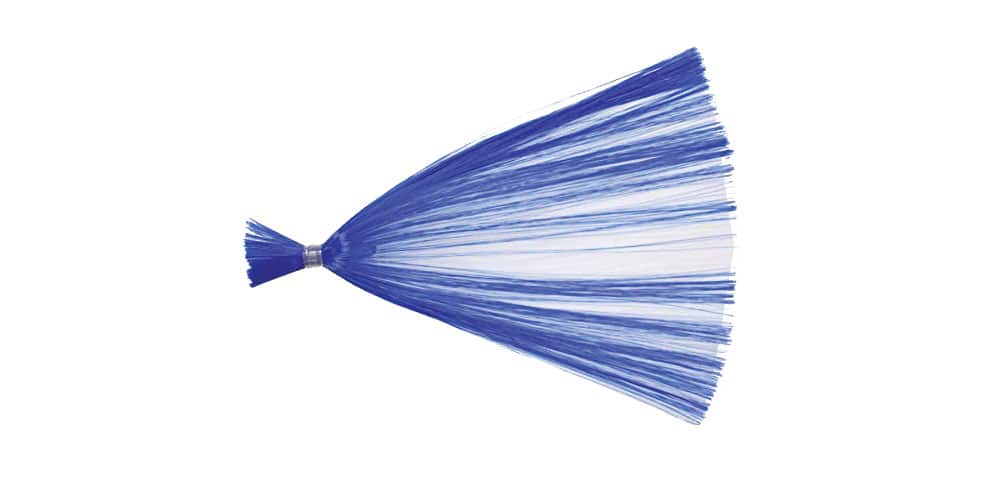
Top Tuna Tamers

Simplicity is often the ticket to success with yellowfins. A couple of teaser strings and Sea Witches ahead of the baits will do.

